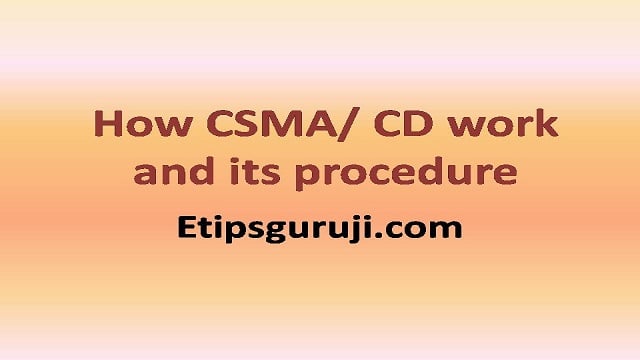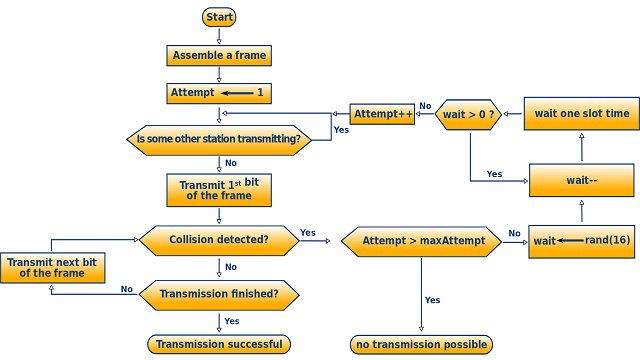How CSMA/ CD Works Best and Its Procedure

CSMA/ CD protocol defines the path and transmission channel. It also restrains the encounter of data- collision. Let’s discuss its process and working standards for better connectivity and collision.
What is CSMA/ CD?
CSMA means Carrier- sense multiple accesses with collision detection. It is a method of controlling media access. The pioneering of this technology was done with the use of Ethernet technology as in local area networking.
This is mainly used for the transmissions with the use of carrier- sensing, in case of non- availability of any other station.
This media access protocol defines the path and transmission channel. It also restrains the encounter of data- collision. The protocol defines the rule to wait for the transmission in case of collision.
How CSMA/ CD work?
The process of transmission in CSMA/ CD works in certain steps as below:
- CSMA sensors check if the sender is available/ ready to transmit data packets.
- The next step is to check whether the link of transmission is idle or not? The transmission is done with the nodes. In case the sender doesn’t receive any collision signal, it means the signal is idle at the moment.
- Now, check for the collision and transmit the data.
In transit, if the node receives the collision signal, it will stop transmission. Afterward, the node will wait for the random time interval and wait for the reattempt to transfer the data and proceed to complete the process.
- In some cases, when collision propagation doesn’t detect, the sender has to complete the transmission with frames and reset the counters.
What is the Procedure of CSMA/ CD?
The procedure of transmission completes the initiation of re transmission due to numerous collisions.
- The transmission in CSMA/ CD will continue until the minimum pocket time reaches a maximum limit and collision is detected by the receiver.
- Re transmission counters increments.
- If the node has reached maximum transmission attempts, it will abort the process.
- It also calculates and waits for the random back off period as per the number of collisions.
- Continue the process from stage 1.
Why CSMA/ CD doesn’t Work in Wireless Connection?
Yes, your answer is valid. CSMA/ CD doesn’t work in wireless connection because there will be no way for the sender to transmit and perform the collision. This protocol acts as a medium for the transmission.
Related Articles:-
- CBR File – Steps to Convert and Open in Various Devices
- What is a Forward Slash? – Its Location and Best Uses
- CMOS Battery- Full Form, Functions, and Replacement
Why is CSMA/ CD Important for Transmission?
Yes, CSMA/Cd gets the significance due to its time- saving feature. The sender can detect the node with this protocol and proceed with the transmission. In case of failure in the process. You can reconnect it so easily and in a shorter time.
What kind of Network is used in CSMA/ CD?
The protocol of Carrier Sense uses the Ethernet network to transmit the media files from the sender to the receiver. The half-duplex of Ethernet uses the collision algorithm to check the availability of a transmission node, the digital signal of wire, and hosts to begin the process.

Some Frequently asked Questions
How does CSMA detect collision?
As we have discussed in the process, sensors detect the transmission availability. It detects the availability, then sends jam signals, waits for the interval, and passes the notification for re transmission.
What is the distinction in between CSMA/ CD and CSMA CA?
The basic difference between these two is CSMA/ CD operates effectively after the process of collision. Whereas, CSMA/ CA effectively operates before the process of collision.
What is the purpose of CSMA/ CD?
The CSMA/ CD is a protocol that defines the process and functionality of transmission between two devices.
Is CSMA/ CD still in operation?
Not actually, the modern Ethernet networks use switches and connections of full-duplex. So, there is no need of using CSMA/CD.
